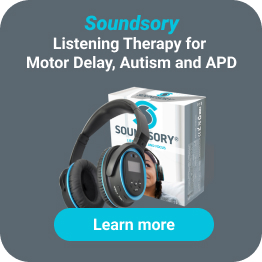All you need to know about the Brain Balance® Program
 Valérie Leroux - November 28, 2023
Valérie Leroux - November 28, 2023 What is the Brain Balance® program?
The Brain Balance® program is a multisensory program that engages the brain and body, training both to work at their best. The aim of the program is to form new pathways in the brain by training different behaviors. This includes physical Brain Balance® exercises, cognitive and sensory activities, and a tailored nutrition plan.
PROS
✅ Personalized program: Each program is tailored to individual needs
✅ Holistic: Comprehensive approach with cognitive, sensory and physical activities, and a nutrition plan
✅ Versatile: Available online and in person. Suitable for children and with different needs and baselines.
CONS
❌ Time-intensive: Requires a three-month commitment to frequent sessions
❌ Cost: May be expensive depending on individual needs
❌ Location: Limited availability for in person coaching in some areas
Who can benefit from the Brain Balance® exercises and program?
The program is aimed at children and adults of all ages, with a range of conditions and challenges that mean they would particularly benefit from the program. These include:
- Children and adults with Attention Deficit Hyperactivity Disorder (ADHD), as the Brain Balance® program can help train their focus and address emotional, social and behavioral issues.
- Children with Autism Spectrum Disorder (ASD). Children with ASD often experience difficulties with learning, sensory-motor activities, social behaviors and communication. The activities in Brain Balance® help to develop neural networks, improving many aspects of this condition.
- Children and adults with high levels of anxiety. Individual experiences of anxiety rely heavily on brain development and connectivity, which is where Brain Balance® can help. There’s a strong link between sensory processing difficulties and anxiety, so the sensory training aspect of this program is particularly helpful.
- Children with learning disorders such as Dyslexia, Dysgraphia, Dyscalculia and Dyspraxia — conditions that can impact your child’s ability to receive information, process, store and respond to it. There’s research to show that these disorders can be linked to weak connections in various areas of the brain [1]. The training exercises in the Brain Balance® program can help to build and strengthen the connections that need further development.
- Children and adults with processing disorders — this includes auditory, sensory and visual processing disorders. Again, these can be linked to different strengths of connection in certain areas of the brain. Brain Balance® training can help to improve these symptoms by strengthening neural connections.
- Children with Oppositional Defiant Disorder (ODD). This is associated with anger, irritability, vindictiveness and argumentative or defensive behavior, particularly towards authority figures. Therapy and brain training can help to condition the brains of children with this disorder, improving their behavior.
- Children struggling academically, behaviorally or socially. Although many children with difficulties do not have a diagnosis, strengthening connections in certain areas of the brain can help to improve all these symptoms in many cases.
What are Brain Balance® Centers?
Brain Balance® Centers are available nationwide throughout the US. There are two options for people taking part in the program — face to face coaching at a Brain Balance® Center, or virtual coaching online based at home. If you opt for a center-based program, your child will attend meetings three times per week with their cognitive coach. These meetings will also be an opportunity to ask questions, track your child’s progress and discuss any challenges you may be facing.
What are Brain Balance® Exercises?
Brain Balance® can help to improve your child’s attention, memory, and problem-solving skills, as well as enhancing their ability to manage stress and mood. Whether they are attending an in-person center or completing the course online, they will complete a range of activities from the program. These include multi-sensory tasks based on rhythm and timing, visual and auditory tasks, core strength exercises and cognitive training. These are all designed to activate multiple areas of the brain for maximum impact.
Is there research behind the Brain Balance® program?
The Brain Balance® program is backed by some research. Recently, Frontiers in Psychology published a study on the program which showed that Brain Balance® helps to improve developmental outcomes in children[2]. This includes improvements in emotional, behavioral, social and motor function, as well as academic ability. This was all achieved without medication, as the program is based on a multimodal training approach for all key areas of brain development.
Another recent study showed that the Brain Balance® program improves attention and behavior in the classroom for children with developmental and attentional difficulties[3]. There were clear improvements in behavior, attention and sensory-motor development compared to the group that did not take part in the program. There’s also research to show that Brain Balance® is as effective as stimulant medication in improving symptoms of ADHD in children [4].
What is the time commitment for the Brain Balance® program?
To take part in the program, you need to commit to a minimum of three months. However, the program can last longer than three months depending on what your child’s goals are and what baseline they’re starting at. You will receive regular updates throughout the course of the program to make sure your child is meeting milestones, and to celebrate breakthroughs.
How much does Brain Balance® cost?
There’s an initial cost for a cognitive assessment, which is required before your child starts the program. The cost for this is $29-$49 for an online assessment, and $199-$299 for a full assessment, varying based on location. The Brain Balance® program is highly individualized to your child’s baseline and needs, so the total number of sessions and resources needed varies from child to child. The total price is calculated after your child has been assessed.
Are there alternatives to Brain Balance® or complementary approaches?
There are plenty of different programs and resources aimed at improving children’s developmental progress. Here, we’ve listed a few that would work particularly well alongside, or instead of, the Brain Balance® program.
Soundsory®
Soundsory® is a 40-day programme aimed at improving motor and cognitive abilities in children with autism, ADHD and processing disorders. It’s the perfect complementary program to Brain Balance®. It consists of enhanced rhythmic music played through a patented headset, which challenges the brain and builds new neural connections. The second part of the program is specialized exercises for posture, balance and coordination — these are performed to music while wearing the headset.
Forbrain®
Forbrain® is a tool that focuses on speech, attention and memory. It’s an audio feedback system, meaning that it allows users to hear themselves speak. It aims to improve communication skills by providing immediate playback, so that people can become more aware of their voice patterns when speaking. This is best used in combination with other programs like Brain Balance® or Soundsory®, for a more comprehensive approach to improving development.
Interactive Metronome®
The Interactive Metronome® program is a computer-based program that consists of exercises for the hands and feet, performed to a metronome beat. Users match their movement to the beat, which improves the timing and synchronization of neural networks, as well as boosting coordination, attention and cognitive function. However, this program can be very expensive when compared to options like Forbrain® and Soundsory®.
Brain Gym® Program
The Brain Gym® program is aimed at children and adults who could benefit from improving their cognitive abilities, children with learning difficulties, and people struggling with stress. The program includes relaxation activities and exercises that claim to reduce stress and anxiety. It is based on neuroscience and principles of exercise kinesiology. However, there is limited research to back up this method, so it is best used as a complementary therapy.
Conclusion
The Brain Balance® program is a holistic approach to improving cognitive, physical and sensory abilities. It is available online and in person, although not everyone will have a local center nearby. It can be used alone or combined with complementary therapies such as Soundsory®, which uses rhythmic music and specialized exercises to build stronger neural connections.
References
- Siugzdaite, R., Bathelt, J., Holmes, J., & Astle, D. E. (2020). Transdiagnostic Brain Mapping in Developmental Disorders. Current Biology, 30(7), 1245-1257.e4. https://doi.org/10.1016/j.cub.2020.01.078
- Jackson, R., & Jordan, J. T. (2023). Reliable change in developmental outcomes of Brain Balance® participants stratified by baseline severity. Frontiers in Psychology, 14. https://doi.org/10.3389/fpsyg.2023.1171936
- Jackson, R., & Glanz, R. M. (2023). The Brain Balance® programme improves attention and classroom behavior in students with attentional and developmental challenges in a school setting (The Brain Balance® program improves the attention and classroom behavior of students with attention and developmental difficulties in a school setting). Childhood and Learning, 1–36. https://doi.org/10.1080/02103702.2023.2235802
Final White Paper: Effects of Brain Balance Exercises and Interactive Metronome on Children with Attention Deficit Hyperactivity Disorder are Similar to the Effects of Stimulant Medication. (n.d.). https://f.hubspotusercontent10.net/hubfs/3798961/Harvard%20Brain_Balance_White_Paper_Final%20with%20Summary.pdf



